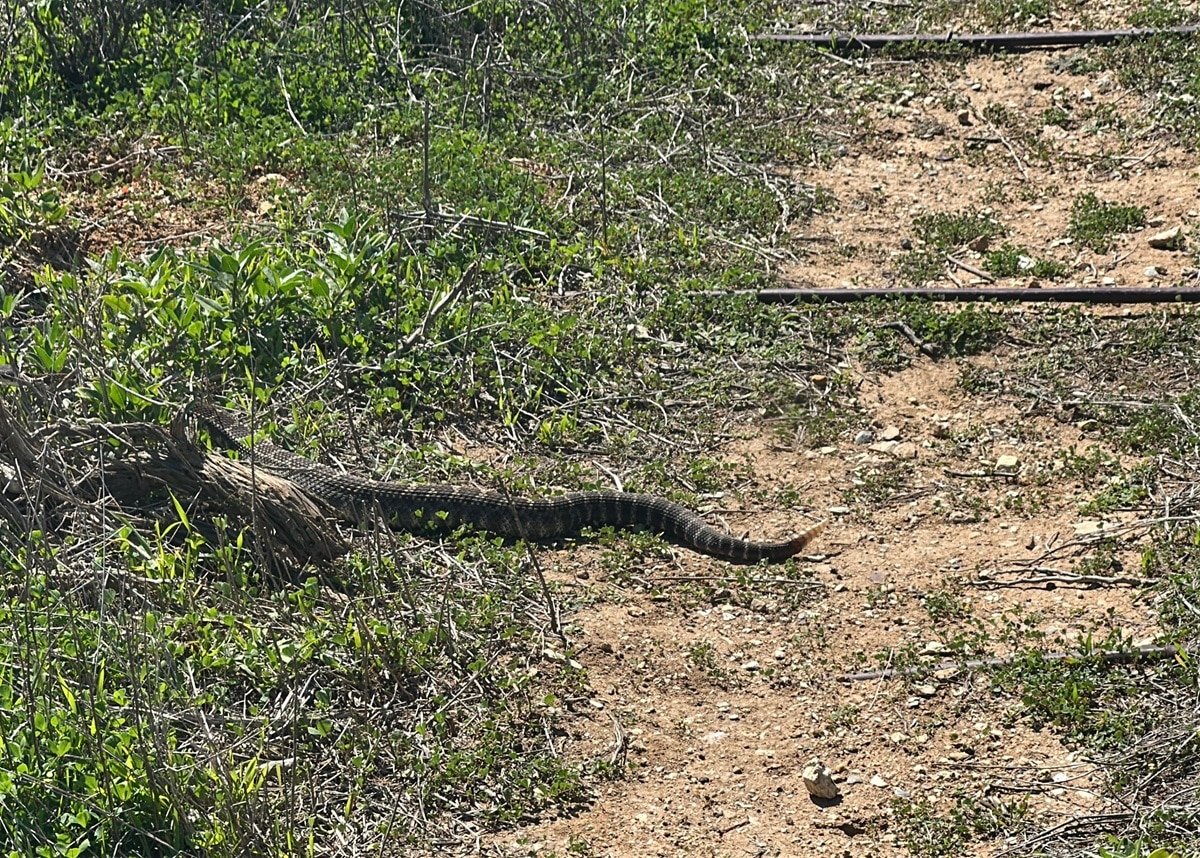If you’re planning to go hiking in California or any area where venomous snakes are present, take note. I recently came across a statement that the Calaveras Consolidated Fire Station (near Sacramento) posted on Facebook. It reads: “An adult male reported that he received a bite to the leg from a baby rattlesnake. The victim was transported by ambulance to the hospital. Calaveras Consolidated Fire wants to remind everyone that it is that time of year for snakes/rattlers, so be sure to watch your step.”

They’re not kidding. Just last week, I went for a coastal hike in Rancho Palos Verdes (near LAX) and encountered a rattlesnake. See the video I took, embedded below, after realizing it was a snake. I was waiting for my niece and sister-in-law with my kids while admiring the scenery. Then I thought, “That’s weird, that hose looks different than the others,” and suddenly, it started moving.

I’ve lived in Los Angeles for over 30 years, including a few years in Palos Verdes, and this was the first time I’ve ever encountered a snake while walking. The other two times I’ve seen snakes were while driving, on the same day my college professor warned me not to retrieve my home run balls from the bushes because of rattlesnakes. I had no idea at the time, but I’m thankful for his advice.
The Centers for Disease Control and Prevention (CDC) reports over 7,000 venomous snake bites a year. The CDC says that “approximately five of those bites result in death” and that “the death toll would be significantly higher if people didn’t seek medical treatment.” For your reference, venomous snake species found in the U.S. include rattlesnakes, copperheads, cottonmouths and coral snakes.
According to the California Department of Fish and Wildlife, most rattlesnake bites in California occur between April and October when both snakes and humans are more active. Find out more from the California Department of Fish and Wildlife.
Here’s the CDC’s advice for rattlesnake bites:
If bitten by a snake:
-
Try to remember the color and shape of the snake to help with treatment.
-
Keep the victim still and calm to slow the spread of venom if the snake is venomous.
-
Seek medical attention immediately.
-
Dial 911 or call your local Emergency Medical Services (EMS).
-
Contact your local Poison Control Center at 1-800-222-1222.
-
If you can’t get the victim to the hospital right away, apply first aid:
-
Lay or sit the person down with the bite below heart level.
-
Keep them calm and still.
-
Wash the wound with warm, soapy water immediately.
-
Cover the bite with a clean, dry dressing.
-
What NOT to do:
-
Don’t try to pick up or trap the snake (this can increase the risk of another bite).
-
Don’t apply a tourniquet.
-
Don’t cut the wound with a knife.
-
Don’t attempt to suck out the venom.
-
Don’t apply ice or immerse the wound in water.
-
Don’t drink alcohol or caffeine as a painkiller.
It’s great to be outside enjoying nature but this is a good reminder to be mindful of where you’re walking.
H/T Sacramento Bee
KEEP READING:
–Unbelievable: Influencer stands inches from bison’s face to take ridiculous selfies
–Yellowstone Park officials put baby bison to death after visitor picks it up
–Horror video of tourist being chased and bitten by seal
–VIDEO: Tourist in Mexico booed and doused with water by angry mob after climbing sacred Mayan temple
–Oblivious or rude? Viral video shows tourist almost ruin destination marriage proposal
Want more travel news, tips and deals? Sign up to Johnny Jet’s free newsletter and check out these popular posts: The Travel Gadget Flight Attendants Never Leave Home Without and 12 Ways to Save Money on Baggage Fees. Follow Johnny Jet on MSN, Facebook, Instagram, Pinterest, and YouTube for all of my travel posts.



